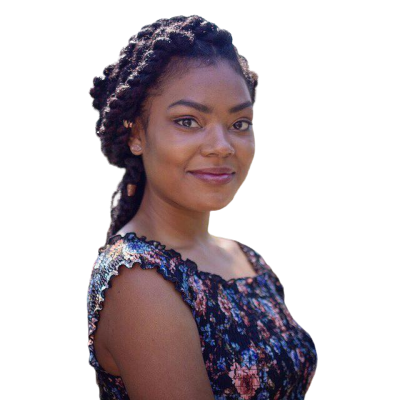Black history is American history.
“I feel like a lot of what I’m doing is reporting on aspects of Black life, which encompasses the context of Black history,” said Kyra Miles, who covers education at WBHM in Birmingham, Alabama. “You can always draw [education] back to race and historical, systemic events that have happened in history.”
February is Black History Month, which is nationally recognized as a celebration of Black American history. But by looking to acknowledge the context in which news is happening, education journalists can recognize “Black history” as central to readers’ daily lives outside of the 28 days.
“When it comes to reporting on education [in Birmingham], it’s not difficult to engage people in consideration of the past,” Miles said. “What’s difficult is to get them to think about it in the context of today.”
Recent legislation sweeping the nation—such as Florida’s ban on Advanced Placement African American studies, Mississippi’s possible expanded role of state police in court systems, and Arkansas’ accusation of “indoctrination” when teaching Black history—makes daily education news reporting all the more important.
Read on for tips and insights from journalists and an educator about how to acknowledge Black history year-round.
Covering Black History Holistically
How do education reporters think about “Black history” outside of the monthly time peg?
“Black people helped build this country, so it’s important to learn about that, especially as we’re seeing so many of the effects of slavery – the disenfranchisement of a group of people – coming to a head at this time,” said Nimah Gobir, an audio journalist at MindShift/KQED in California.
“It’s in our politics. If you look closely, you can see [history] in your neighborhoods,” she said. “It helps us understand our world.”
Gobir attended a school that served a predominantly white student population in the East Bay area of California. She didn’t see many examples of Black representation in class. Then, during Black History Month, she felt alienated or tokenized by her teachers or classmates when singled out as an example of a selected avenue of history.
“That wouldn’t happen if we were always covering this,” she said. “Covering Black history in a more holistic way.”
Holistic often means contextualizing coverage. Events don’t happen in isolation. Take, for example, Florida’s recent move to ban AP African American studies, which has resulted in a national outcry and other states working to copy the drastic measure.
Miami Herald journalist Sommer Brugal wrote a story, after the Florida news broke, about students in that course and how they felt about the cancellation. Many students described feeling “robbed” of an education.
“If this is a change [state officials are] going to make [and] take away from me learning simple history, what else can they take away from my education?” student Chyna Lee Hunter told the Miami Herald. “We won’t know the full story. Everyone is always going to feel uncomfortable and misplaced.”
Solidarity in Education
Teaching American history with an eye toward understanding how racism has shaped our country is to engage students in solidarity with one another, one Boston school educator said.
“People have a lot of questions that we really have to get into history to answer,” ethnic studies teacher Amrita Dani said.
Students as old as 21 at the adult technical academy where she teaches will ask her: Why does slavery happen; how can so much violence occur; what is race, and where does the idea come from; what is a racial hierarchy?
Particularly important, too, is when Dani’s students ask her why enslaved Africans did not resist. Her curriculum works to show how the way history is taught often will favor the oppressors in history.
“First of all, the system was incredibly violent and needed violence to maintain itself,” she said. “And there was resistance all the time.”
Dani emphasizes with her students how stories that do get told perpetuate ideas that suppress others.
The way history is taught often does not show “Black people as actors and agents who are able to change the society,” she said. Educators have the ability to challenge that narrative by creating a curriculum that elevates, not suppresses.
“I want to teach in a way that connects to the world students see around them,” she said.
Journalist’s Toolbox
Compare and Contrast.
For Jamaal Abdul-Alim, education editor at The Conversation, covering Black History at every opportunity he had is what led him to a career in journalism.
“I wouldn’t be a journalist if it wasn’t for Black history,” he said. Abdul-Alim said education journalists can examine details even down to the classroom focus on slavery, and whether the only “Black history” taught in school is about enslaved Africans.
Journalists also can look at the demographics of educators in the schools, he said. National data shows that most often white educators teach in schools, even with a majority of students who are Black. Some of his outlet’s reporting illustrated a bias in how white teachers spoke about the ethnicity of their students.
“The color of the teacher is not the effectiveness of the teacher,” Abdul-Alim said. “But it’s your consciousness of the situation and surroundings.”
Redefine Terms.
Terms increasingly recycled by politicians to virtue-signal to a base become meaningless. Ask for definitions, add context, or decide to exclude the reference if it is meaningless. Examples include “woke,” “critical race theory,” and “snowflakes.”
It’s not enough for a politician to have used a phrase for it to be meaningful, Brugal said. She will add a phrase to her stories similar to: “[This] has become a dog whistle of the Republican party to mean anything that has to do with race relations.”
Tips for Diversifying Your Sources
Source Audits.
Gobir’s radio station aggregates data on the sources journalists use in their stories. The audit, a questionnaire, is sent post-interview, and asks sources about their race and ethnicity, age, pronouns, and their primary professional roles.
Adding sexuality and disability status to this type of questionnaire is recommended, too. Additionally, allow for a source to not disclose this information.
The station compares sources’ diversities to the population demographics of the geographic area they cover, as one benchmark.
Look for Joy.
“I think about joy more than I think about the non-joy stories,” Miles said.
People, especially from communities more used to seeing tragedy reflected in news coverage, will be much more willing to talk to a journalist about their joys. This also will help to build better relationships with sources, Miles said.
Lean Into the History of a Place.
Places form over time, and this evolution is an incredibly important context to consider when reporting, even on daily news.
Consider the demographics of a location and why it’s organized the way it is. How did segregation of people contribute to what you’re writing about now? How about the ways schools are funded locally? Where do the teachers live? Where do their students live?
“Both sides” are not always equal.
As a news reader, educator Dani has noticed when news outlets have “an eye toward the power relations at play” in their stories, she said.
Don’t flatten the narrative by treating opposing viewpoints as fundamentally equal. Lived experiences outweigh opinion, and supporting experience with history and facts tells a fuller story.



